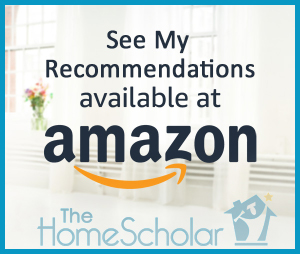Help for Tubbies, Cubbies, and Binder Queens

Help for Tubbies, Cubbies, and Binder Queens
If you are homeschooling a high school student, you’ve probably given at least a little thought to keeping homeschool records. Perhaps you’ve only thought about it vaguely and said to yourself, “I’ll get to it someday." Even if you’re convinced your student will never go to college, chances are a situation will arise when you will need to provide a record of your student’s high school experience, even if it’s only for a camp counselor application or a volunteer position! Here are some pointers on what to keep, when to start keeping records, and how to ease into it if you haven’t started yet.
Choose a Method
The good news is that no matter your organizational ability (or lack thereof), there are a few easy methods you can use to track your student’s coursework. The first is what I affectionately call the “tubbie” method. Tubbies toss homework and tests into a big plastic tub, hoping someday to go through and organize it.
Slightly further up the organizational “food chain” are parents who keep records in cupboards, cabinets, or drawers. These “cubbies” are usually a little more organized than the tubbies, using a different drawer for each child, and perhaps even different drawers for each year.
Other parents keep track of their students' work in notebooks. These are the “binder queens" (or kings) of the homeschool world. They tend to be the most organized people I meet.
What to Keep
Once you have chosen your method, whether it’s using a tub, a cupboard, or a binder, what exactly should you keep? For some classes, such as math or science, it’s easy; keep tests, labs, and worksheets. But what about classes such as home economics or piano? This is where you need to think creatively. Think about what your child does in each class. For a home economics class, you could keep menus, shopping lists, and pictures of meals your child created. For a piano class, you could keep the list of songs your student learned, the piano books they used, and theor recital programs.
Records can include a list of books read, how many hours spent on a subject, or co-op class course descriptions. Some parents photocopy the cover and table of contents of each textbook for writing course descriptions. Your student could also keep a journal of what they work on each day or week to share in the work of tracking!
When to Keep Records
When your child enters high school, it becomes more critical to keep records. Of course, your student needn’t be 14, or in 9th grade, before you start keeping records. It’s common for homeschoolers to do high school level work at the age of 12 or 13. If your student is not technically high school age but is nevertheless doing high school work, make sure to give them credit for it! If your child is in 7th or 8th grade, consider keeping homeschool records as if they were already in high school to be prepared for anything as you move forward.
Try to move up the organizational food chain over the years, so that by the time your student is a senior, you are organized and ready to produce transcripts and course descriptions when necessary. Start small, but start somewhere!


 Login
Login





.jpg)

Comments